#asclepias incarnata
Text

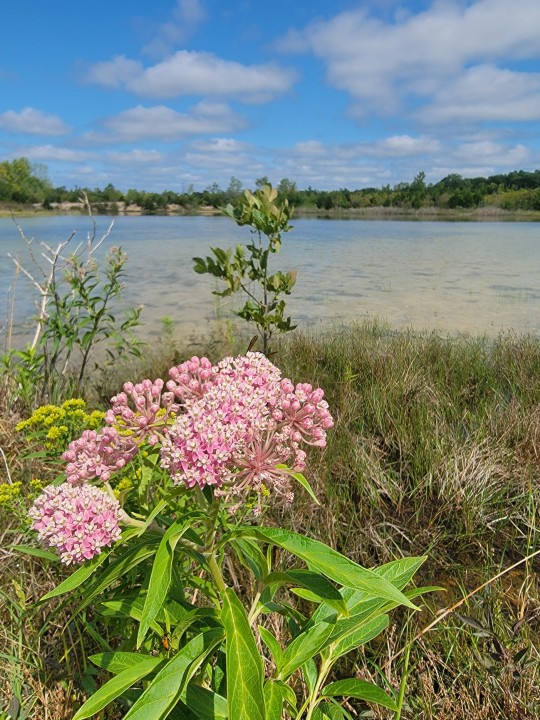
Swamp milkweed, Asclepias incarnata, growing in a marl mound with multiple rushes and sedges reminiscent of ancient river scours in Tennessee and glacial alvar wetlands. Most of the sedges are state listed in Ohio. A balled faced hornet with a few corpuscule (singular corpusculum) attached to the hooks on it's legs is seen getting nectar and pollinating. Its cool to check in on all of you Asclepias incarnata you come to in-situ. It tells you a lot about pollinators present. The other thing that makes this species interesting is further divisions. SSP. incarnata and pulchera respectively as of current are divided into two sections and appear to have a northern/ plains and eastern/ southern dist. The hairy stemmed pulchera(G5) is fairly variable and much more common with conduplicate foliage and dark purple flowers unlike above. The other accepted subsp. is considered G4 and is glaberous with a height reduction in many cases and smaller leaves on average. The real kicker is someone has reported glandular hair in the past and I am curious if a third ssp. even occurs or if it was a missed report.
248 notes
·
View notes
Text
*cracks knuckles* Alright everyone strap in.
Hi, I'm Ani, the appointed Milkweed Queen of several Discord group chats, and I'm gonna talk about some of my favorite types of milkweed because its Earth Day, I'm bored, and I had nothing else ready to post. Everyone ready?
I'm not going to give these a formal ranking, I'm just going to ramble about them.
We all know the important reasons to like milkweed--supporting Monarchs, feeding the pollinators, restoring native species to your local habitat and creating an environment for many creatures to live in, that's all fantastic obviously. With that established, this ranking system will have little to do with that. We're talking aesthetics, babey! And any fun facts I happen to toss in are, well, fun facts. If you learn about a new kind of milkweed from this, or want to chime in with your own favorites, by all means let me know!

Swamp milkweed (Asclepias incarnata)! If you've been following my blog for awhile, you likely know I've been on a Grand Quest to find, purchase, and/or grow swamp milkweed for a few years now. Honestly, though, who can blame me! Look at those vibrant pink flowers, contrasting with those bright green leaves! Love at first sight, I'm telling you. I've also heard that it smells like vanilla. Vanilla! It's also, reportedly, one of the few types of milkweed that excels in wet environments, and even though my environment isn't very wet, we stan a queen for that quality.
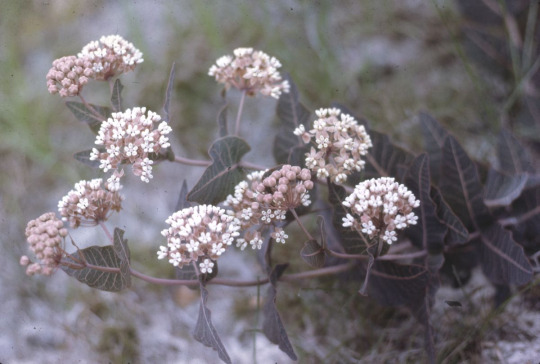
Whether you prefer to call it Sandhill Milkweed or Pinewoods Milkweed, Asclepias humistrata is a champion of sandy soils and also my heart. I hadn't looked too far into this species until late last year, when I was helping another friend look at different milkweeds, but how could I not look into this beautiful plant! With pink stems and veins as early as the seedling stage, pinkish-white flowers and a low-growing spread habit, I would be honored to grow such a specimen in my garden. Their inch-thick, foot-long tap roots help them to quickly spring back to life after a wildfire, providing important food and habitat for creatures returning to the area. How lovely!

Redring milkweed (Asclepias variegata) is another species I hadn't looked too far into until this year, and honestly at great detriment to myself. I'll be honest! I may have ignored this queen at first because I'm not big on white flowers, but those red rings...! Ooh, I want this so bad. The leaves are also fairly big and a lovely dark green, which just makes the white and red pop out more!

Heartleaf milkweed (Asclepias cordifolia) is honestly so iconic, I wish it was native to my region! If you live on the West coast... grow some for me please. How can you not love this specimen! Dusty green heart-shaped leaves directly attached to pink stems, these stunning deep reddish-purple flower clusters...! I continued following one of the most annoying people I'd ever witnessed on Instagram for two months just because I first saw this species in a tiktok of his.

Purple milkweed (Asclepias purparescens) is honestly just. A queen. What else is there to say? Look how purple she is! So purple I almost can't believe it's even real, and yet they are! Not native to my region, far as I know, which is a bummer. I've heard they're hard to grow, but if you can manage it? Share your secrets with the world, honestly, we need more of this plant in our lives.
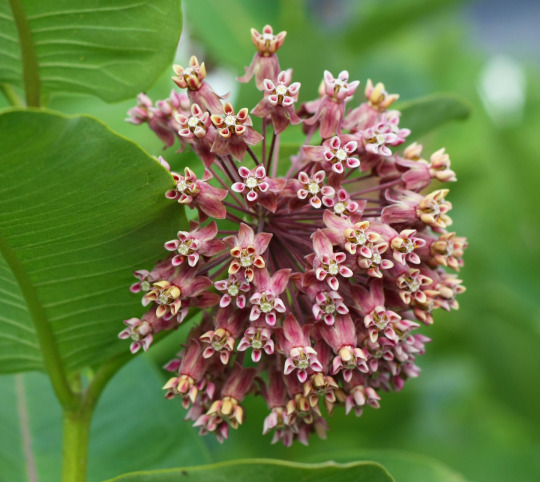
Common milkweed (Asclepias syriaca) is honestly just a classic. I love the light pink of the flowers, and those leaves are huge! I've heard they spread like wildfire, but with clusters of blooms like this? How can you even be too mad about that?
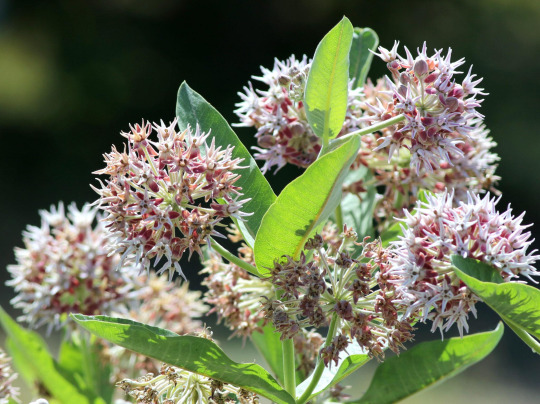
Showy milkweed (Asclepias speciosa). Honestly I'm not going to pretend I was always crazy about this species, but the more I see it pop up on iNaturalist, the more I find myself growing fond of it. These flowers look like crazy fireworks, and honestly, kinda have to stan.
"Oh, Ani, you have so many lovely favorites! Do you have any least favorite--" Tropical milkweed, hands down. I appreciate it's value as more of a 'babys first milkweed' plant but I'm tired of seeing it everywhere, especially knowing it's a bit invasive in my area?
Anyways, these are some of my favorite milkweed species! What are some of yours?
#milkweed#pollinator gardening#asclepias#asclepias humistrata#asclepias incarnata#asclepias syriaca#asclepias variegata#asclepias cordifolia#asclepias purparescens#asclepias speciosa#swamp milkweed#sandhill milkweed#pinewoods milkweed#redring milkweed#red ring milkweed#heartleaf milkweed#heart leaf milkweed#purple milkweed#common milkweed#showy milkweed#gardening#flowers#pink flowers#purple flowers#white flowers#ani rambles#out of queue#pollinator garden
185 notes
·
View notes
Text
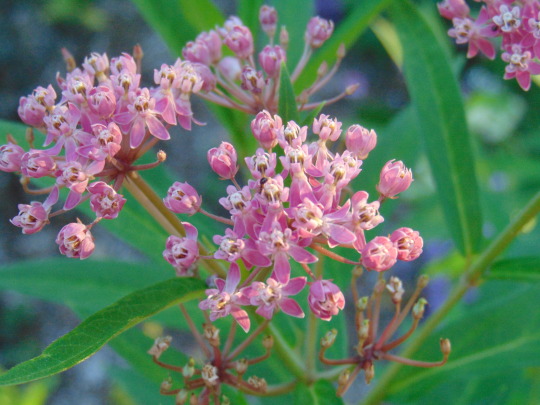


I find the blossoms of milkweed to be fascinating
10 notes
·
View notes
Photo
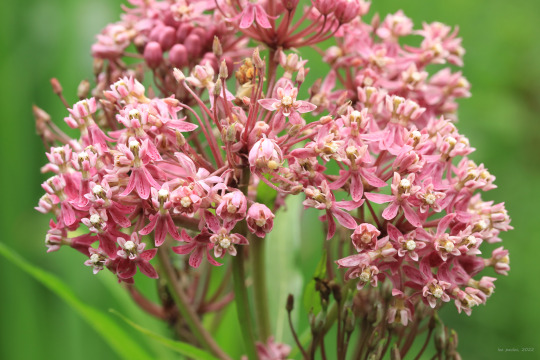
Rose milkweed (Asclepias incarnata), also known as swamp milkweed, the last of the milkweeds to bloom in this area.
#appalachia#vandalia#west virginia#summer#wildflowers#flora#asclepias incarnata#rose milkweed#swamp milkweed#west virginia botanic garden#tibbs run preserve
64 notes
·
View notes
Text
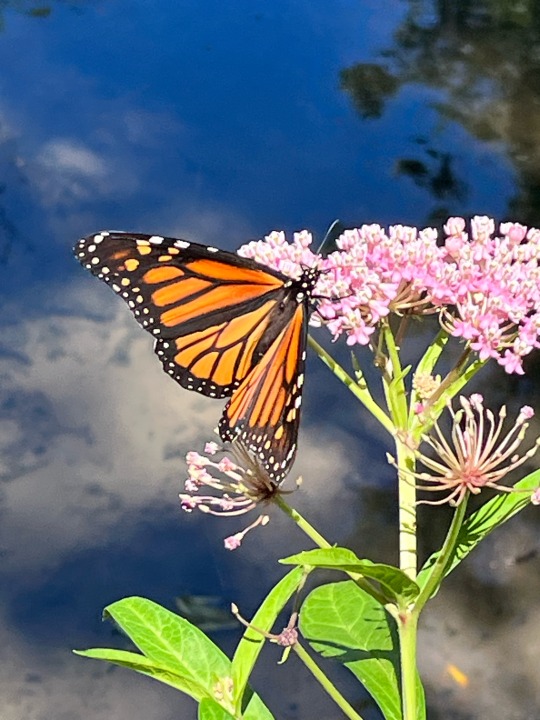
Sip.
1 note
·
View note
Text
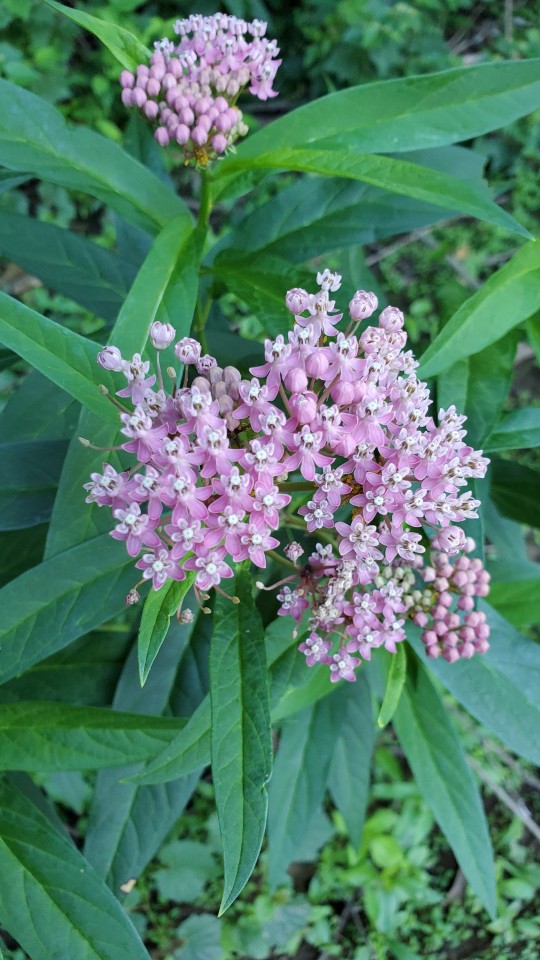

7/30/22
0 notes
Text
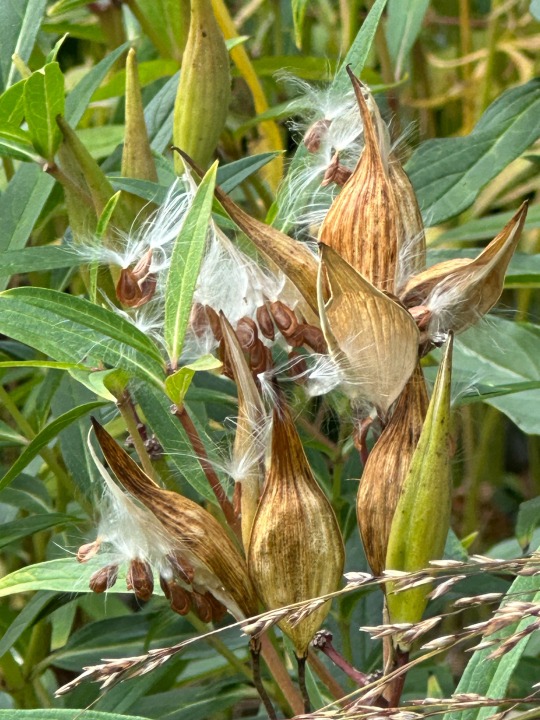
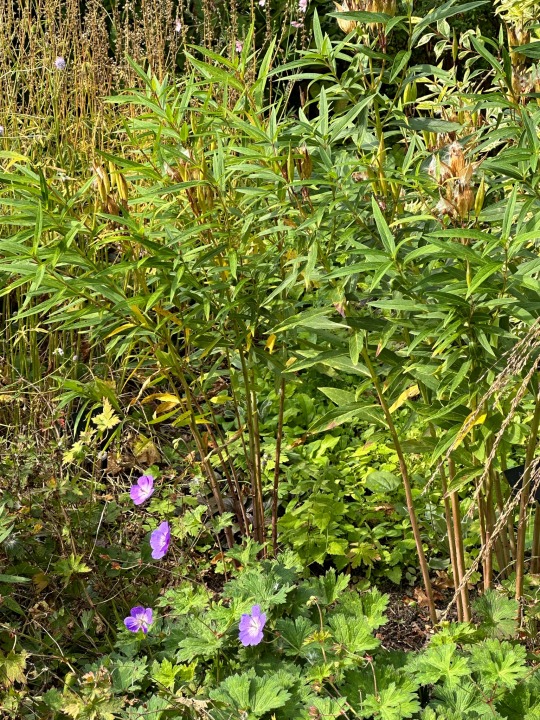
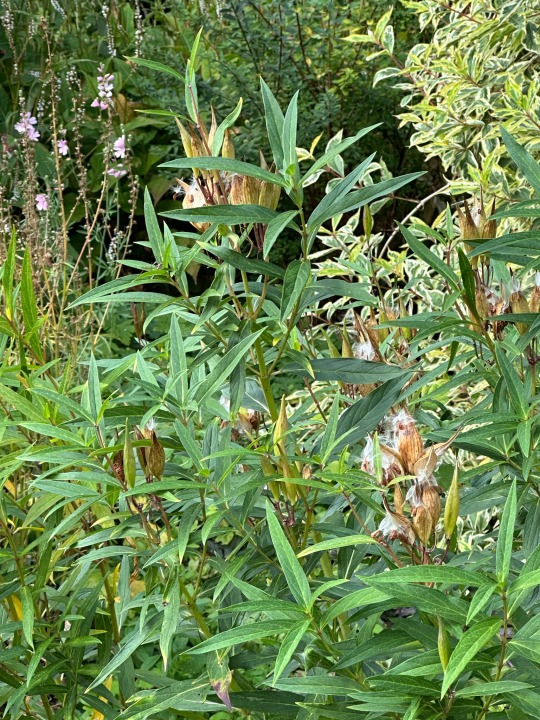
Plant of the Day
Tuesday 6 February 2024
The herbaceous perennial Asclepias incarnata (swamp milkweed) has clusters of lilac purple flowers in bud, opening to white and are then followed by distinctive seed heads. This strong stemmed plant exudes a milky sap (hence the common name) which can be a skin irritant.
Jill Raggett
#Asclepias#swamp milkweed#herbaceous#perennial#plants#horticulture#gardens#garden#essex#herbaceousperennial#seed head#Beth Chatto Garden#seeds
60 notes
·
View notes
Text
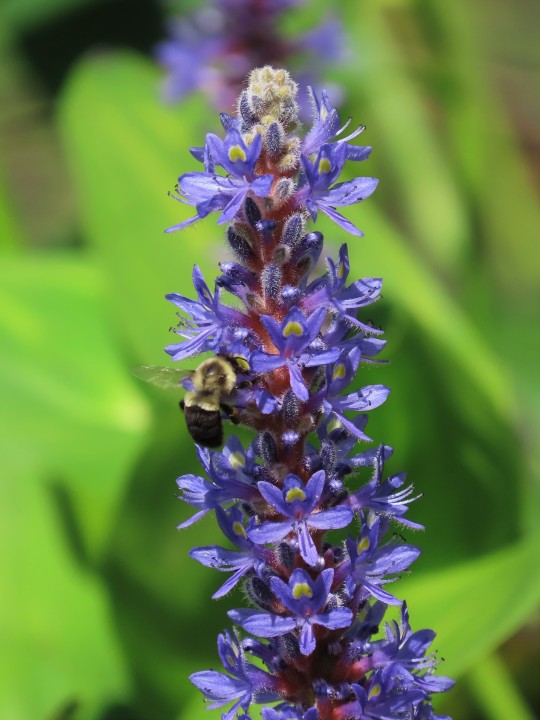


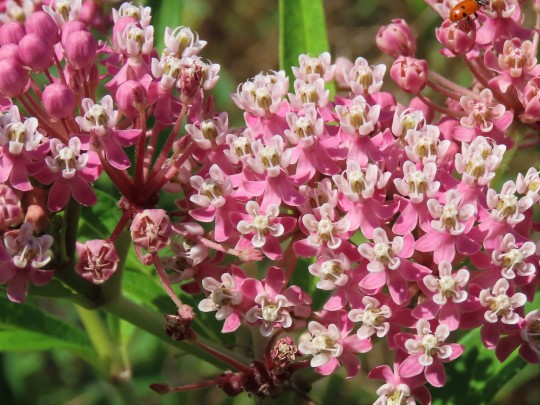

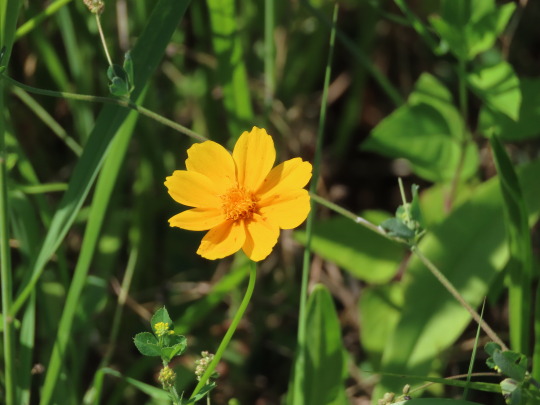
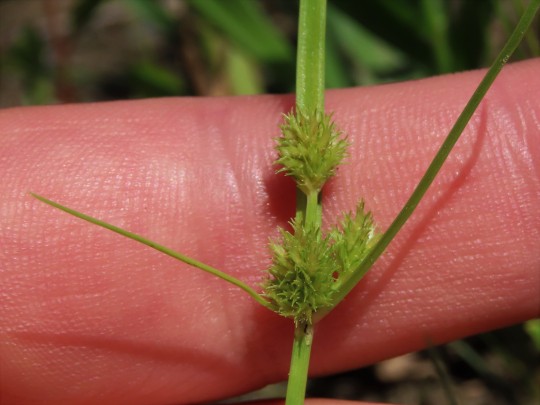


Yep. Plants Time
Pontederia cordata - Pickerelweed
Verbena hastata - Blue Vervain
Monarda fistulosa - Wild Bergamot
Asclepias incarnata - Swamp Milkweed
Sagittaria latifolia - Broadleaf Arrowhead
Coreopsis lanceolata (!) - Lanceleaf Coreopsis (Nonnative to New Jersey, but often included in native seed mixes used for restoration projects, though considering its native range on the east coast ends in Virginia/How well it does up here and further north maybe it did range up here prior to glaciation?)
Cyperus squarrosus - Bearded Flatsedge
Solidago juncea - Early Goldenrod
Echinacea purpurea (!) - Purple Coneflower (Another nonnative-native, a classic plant of midwest prairies thats been spread nationwide through both garden escapees and inclusion in native seed mixes)
-8/23, Bergen County, NJ
52 notes
·
View notes
Text

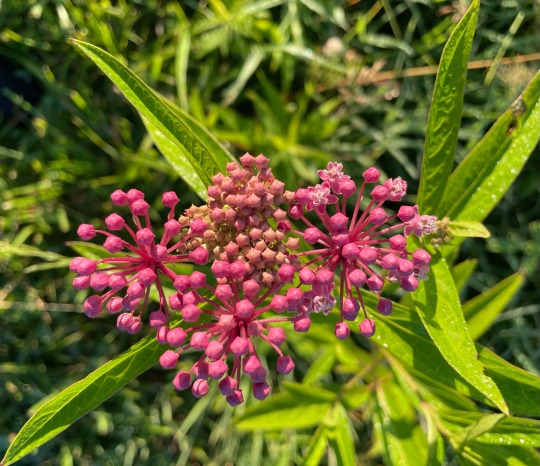
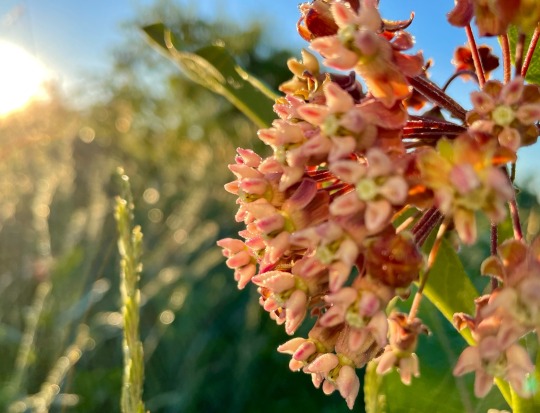
For the Asclepias fans—it’s milkweed season.
Butterfly weed, Asclepias tuberosa; swamp milkweed, Asclepias incarnata; common milkweed, Asclepias syriaca.
338 notes
·
View notes
Text
MIDWEST/EAST US: I have the following native flower (and one grass) seeds available for cost of shipping, all harvested from either my garden or from nearby parks in small amounts. if you're interested please kofi me here and shoot me a message with your address and what you'd like! amount/availability may vary but I would like to share as much as possible.
before requesting please make sure the seeds you want are native to your state! prairie moon has range maps for many of the species here; otherwise a quick search of the scientific name should let you know.
seeds I have:
-Cup plant (silphium perfoliatum)
-Common milkweed (asclepias syriaca)
-Swamp milkweed (asclepias incarnata)
-Honeyvine milkweed (cynanchum laeve)
-Maypop (passiflora incarnata)
-Bee balm (monarda fistulosa)
-Foxglove beardtongue (penstemon digitalis)
-Purple coneflower (echinacea purpurea)
-Missouri coneflower (rudbeckia missouriensis)
-Showy sunflower (helianthus pauciflorus)
-Cliff goldenrod (solidago drummondii)
-Meadow blazing star (liatris ligulistylis)
-Common evening primrose (oenothera biennis)
-Blue sage (salvia azurea)
-Little bluestem (schizachyrium scoparium)
-Blue mistflower (conoclinium coelestinum)
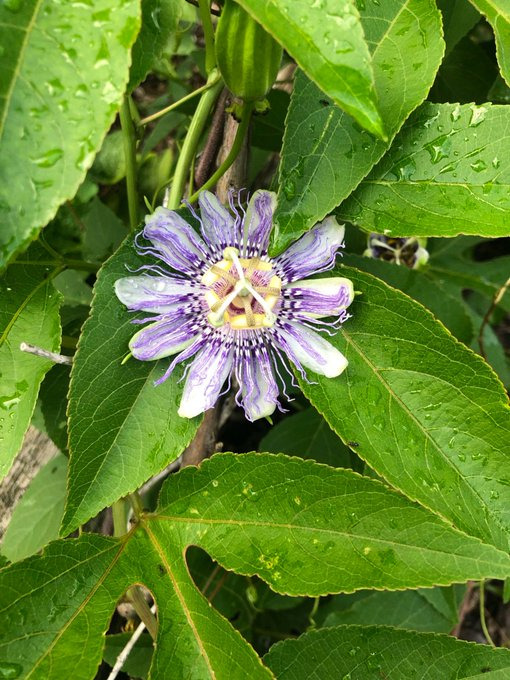

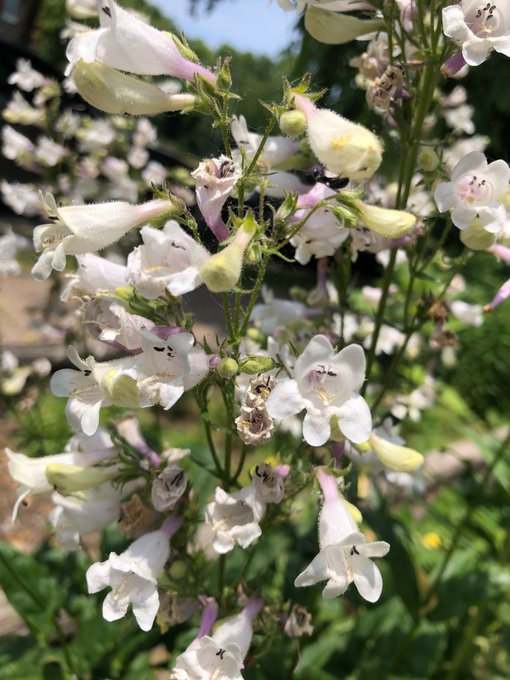

#plants#gardening#native plant gardening#native plants#flowers#prairie plants#free#maypop#sunflower#milkweed#insect gardening#bigeelsplantposting
12 notes
·
View notes
Text
More flowers from my garden!
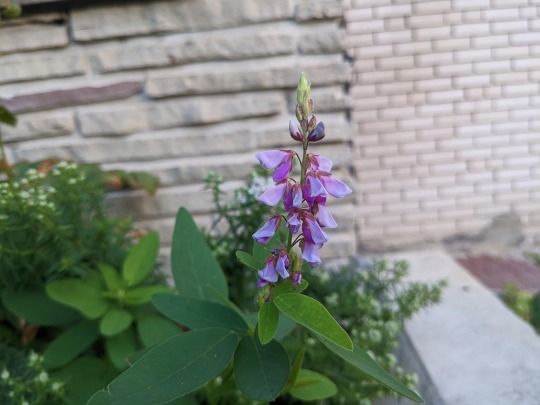
Desmodium canadense (showy tick trefoil)
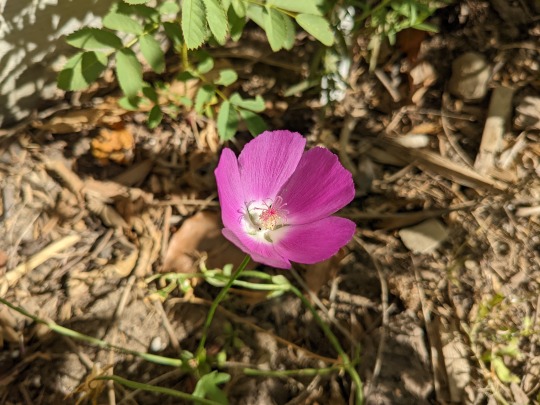
Callirhoe involucrata (purple poppymallow)

Pycnanthemum virginianum (Virginia mountain mint)
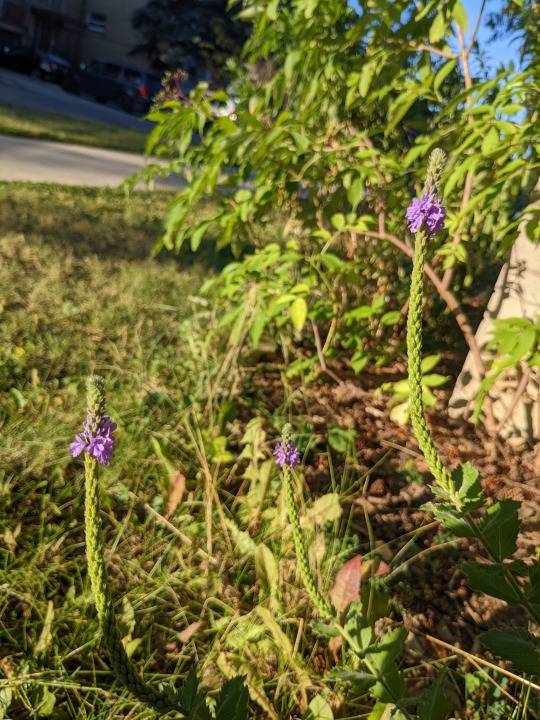
Verbena stricta (hoary vervain)

Eupatorium purpureum (sweet joe-pye-weed)

Monarda punctata (spotted beebalm)
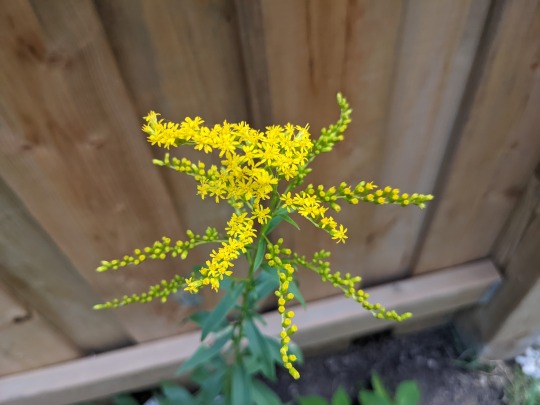
Solidago juncea (early goldenrod)
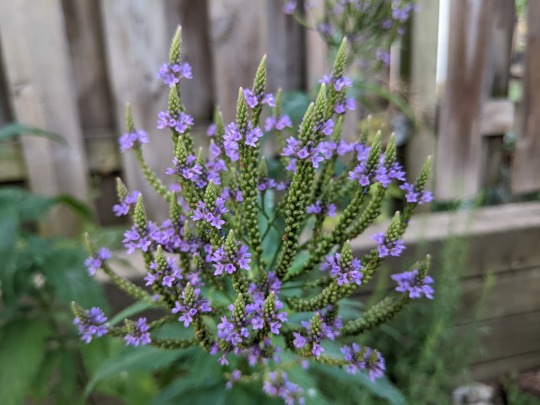
Verbena hastata (blue vervain)
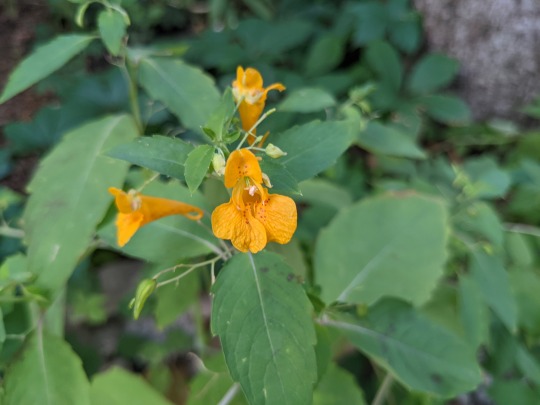
Impatiens capensis (spotted jewelweed)

Helianthus nuttallii (common tall sunflower)

Symphyotrichum ciliatum (fringed blue aster)
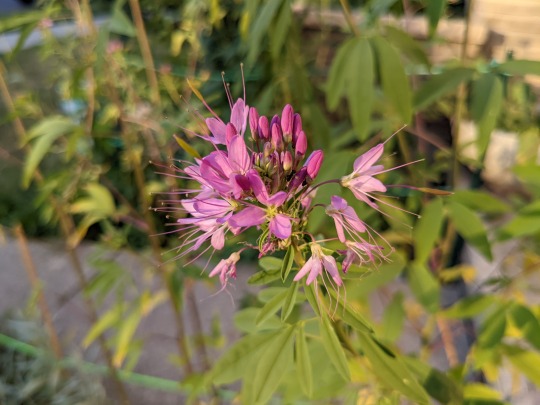
Cleome serrulata (Rocky Mountains bee plant)

Actaea racemosa (black snakeroot)

Helianthus pauciflorus (stiff sunflower)
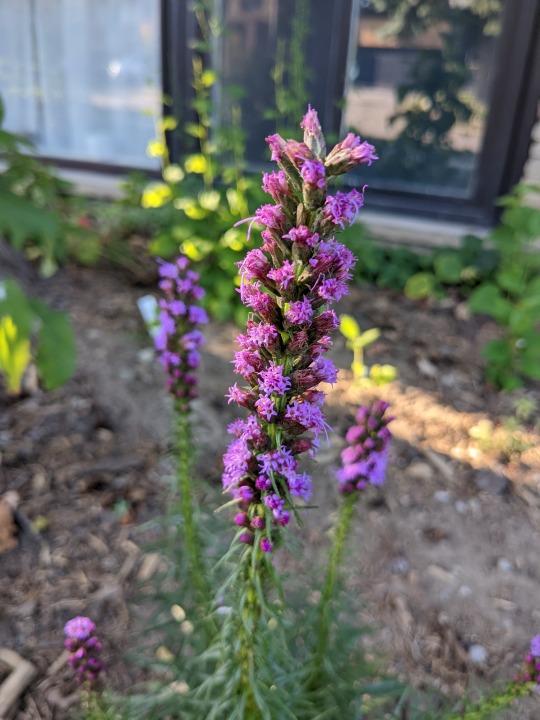
Liatris spicata (dense blazing star)

Hypericum punctatum (spotted St. John's wort)

Spiraea alba (meadowsweet)
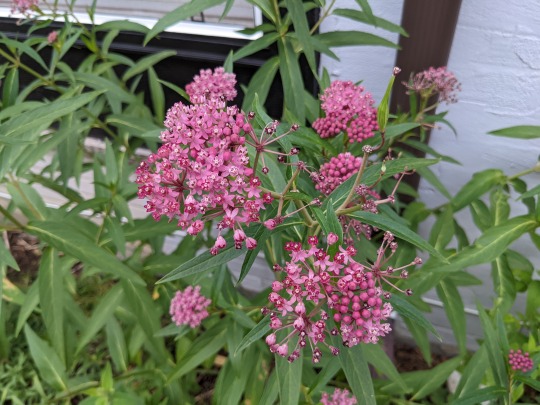
Asclepias incarnata (swamp milkweed)

Agastache foeniculum (anise hyssop)
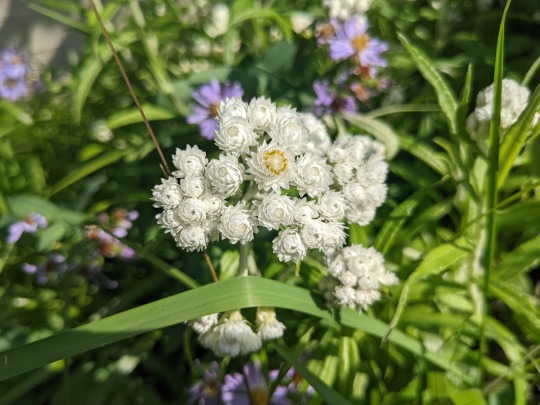
Anaphalis margaritacea (pearly everlasting)

Symphyotrichum laeve (smooth aster)
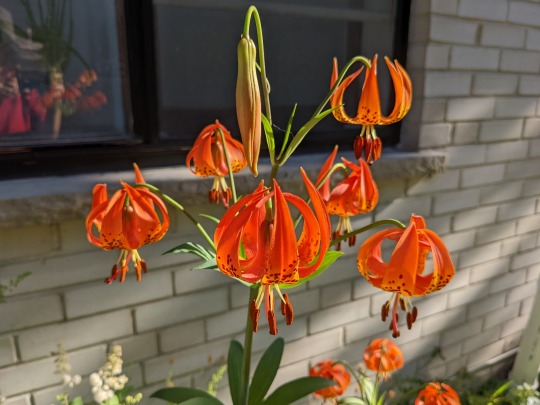
Lilium michiganense (Michigan lily)
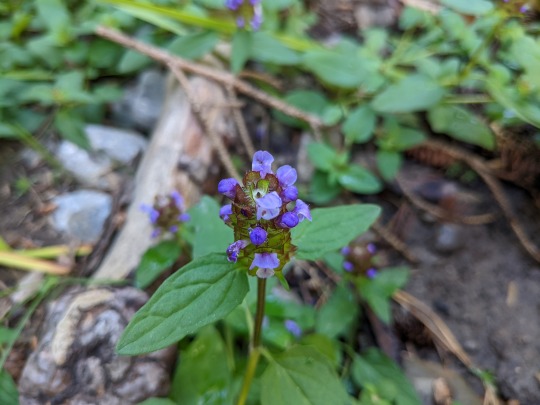
Prunella vulgaris ssp. vulgaris (common selfheal)

Symphyotrichum lanceolate (panicled aster)

Astragalus canadensis (Canada milk vetch)
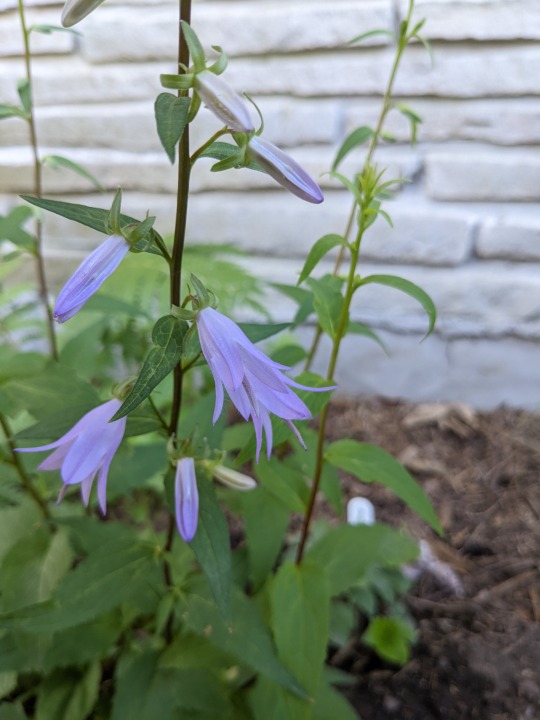
Campanulastrum americanum (marsh harebell)

Sambucus canadensis (common elderberry)

Mertensia paniculata (tall bluebells)
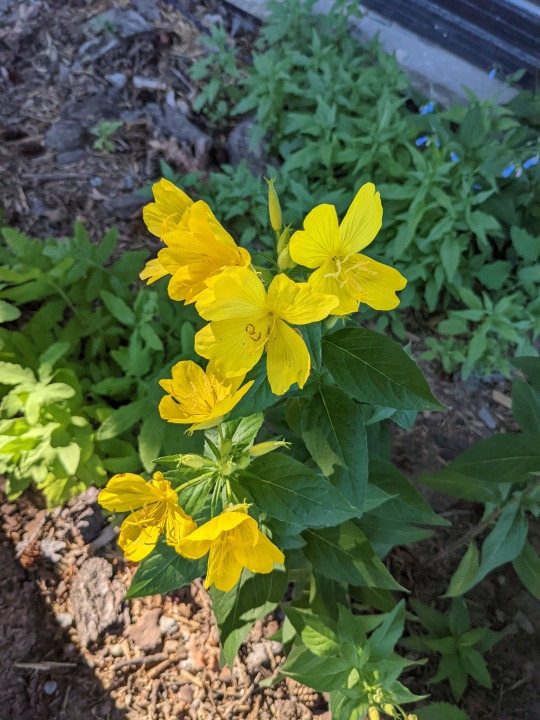
Oenothera fruticosa (narrow-leaved sundrops)

Lilium philadelphicum (wood lily)
And cut off again. lol
16 notes
·
View notes
Text
Note to Self: Oklahoma Milkweeds
Asclepias Incarnata (Swamp Milkweed)
Asclepias Syriaca (Common Milkweed)
Asclepias Tuberosa (Butterfly Weed)
Asclepias Verticillata (Whorled Milkweed)
Asclepias Amplexicaulis (Sand Milkweed)
1 note
·
View note
Text
Hey fellow milkweed nerds of Tumblr I have a question.
So. Swamp milkweed. It's pink! That's pretty cool. I wanna know how pink.
Because whenever I google Swamp Milkweed, whether its to look for seeds or plants for sale or just to show other people, the flowers look like this.


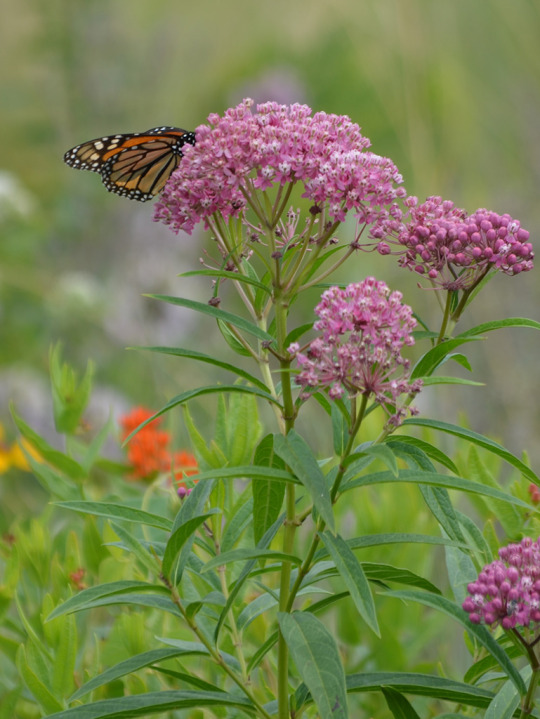
[ID: Three pictures of swamp milkweed, all a very very bright vivid hot pink with white middles.]
Thats Fucking Hot Pink. This bright ass pink is what drew me to the plant in the first place. If I were to find my Dream Swamp Milkweed, it would be this pink.
However, a lot of the times, I end up finding swamp milkweed that looks more like this.
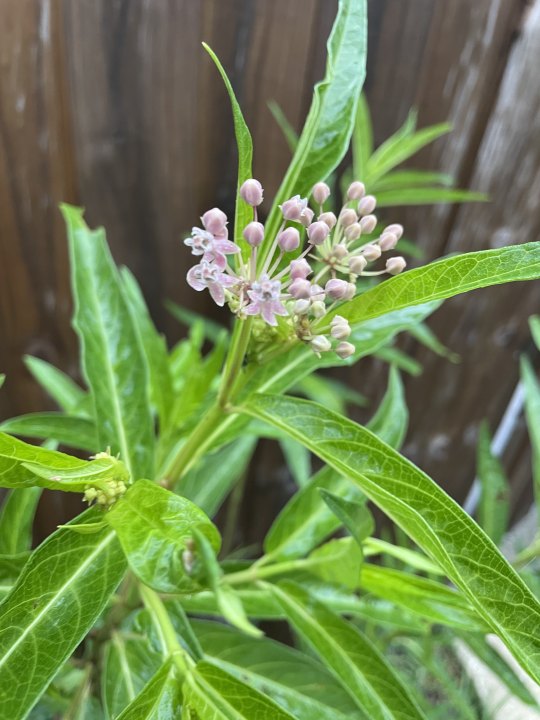

[ID: Two pictures of swamp milkweed, both from the same plant. The flowers are a light, nearly white, light pink.]
Its a much lighter, more of a strawberry-milk pink. These are pictures I took from my own swamp milkweed plant, but from the pictures I've seen in my gardening server, a lot of them have plants in a color similar to this.
So what I'm curious about is. If you grow swamp milkweed, or have seen it growing in the wild, have you ever seen it as pink in the first example? Or is it just Photoshop magic? And if you do have it that pink... do you have any seeds you'd be willing to share?
#milkweed#swamp milkweed#pollinator gardening#pollinator garden#asclepias#asclepias incarnata#like im genuinely curious#as the self proclaimed milkweed queen of Tumblr I Want To Know#and also as the self proclaimed milkweed queen of Tumblr if you have a vivid pink milkweed plz send me pics and also seeds#i can send mexican sunflower seeds in return if you want even#i genuinely wanna know because I swear when I see images of vivid pink milkweeds its either a site trying to sell milkweed#or a site trying to promote native milkweeds#NOW. I bought some bare root plants from Home Depot#they haven't flowered yet but if they come back next year and they're vivid ass hot pink then I'll have fulfilled this Research Question#but until they flower next year (if they even come back I kinda neglected them on accident) I am DYING to know#i have seen NO ONE thats like a real person with bright ass pink milkweed#is it a thing they do when the plants are older? is it a specific strain everyone's going crazy over? or is it photoshop#vote now on your phones#ani rambles#out of queue
43 notes
·
View notes
Text
Summer Blooms
Asclepias Incarnata (Swamp Milkweed)
©2023 Ken Oliver

#nature#photographers on tumblr#photography#original photographers#original photographers on tumblr#nature photography#original photography on tumblr#macro#flora#milkweed#flowers#wildflowers#bee
4 notes
·
View notes
Photo
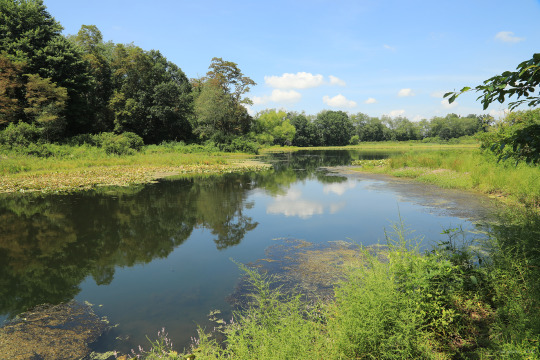
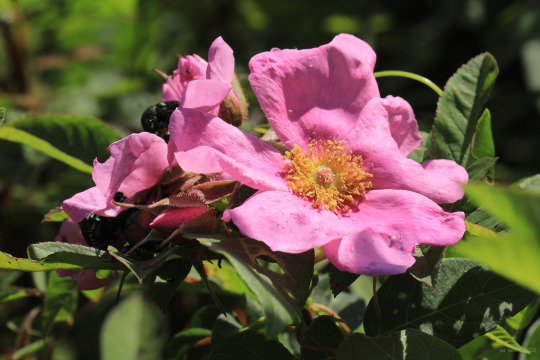
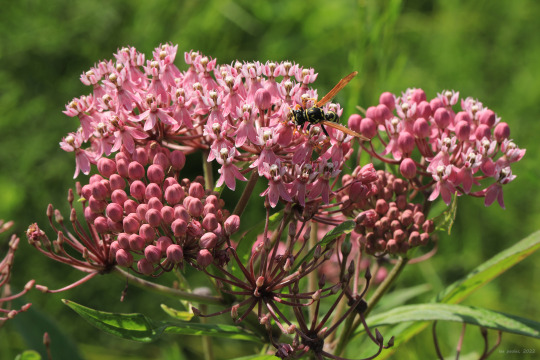

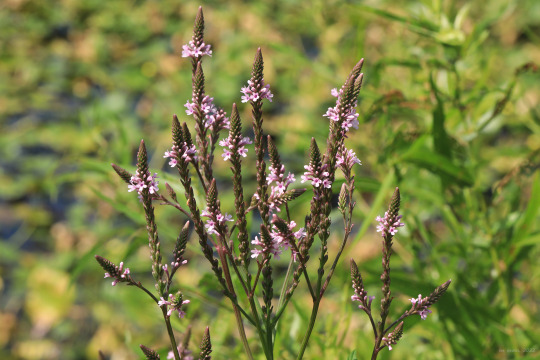
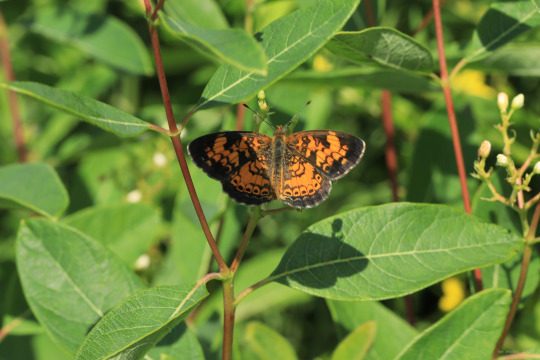


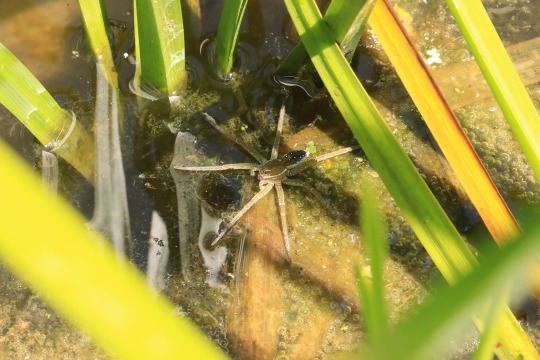
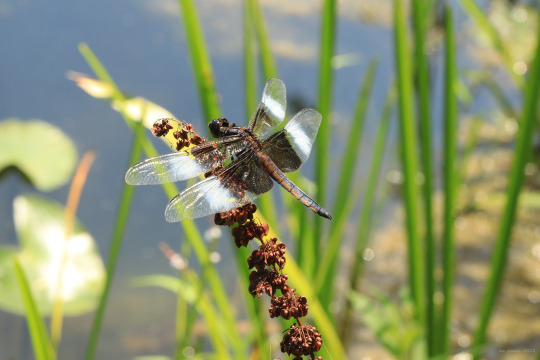
It was oppressively and unnecessarily hot today - in the low 90′s - so I eschewed any grand adventures and made homemade salsa instead with batches of newly-ripened goodies from my tomato and pepper pots. My sole foray outside was a mid-morning hike around Fairfax Pond-Rehe Wildlife Management Area, whose beautiful, interconnected ponds and waterways seemed right for the occasion. Swamp rose (Rosa palustris) is a bit past peak now, and riddled with Japanese beetles, but it makes a grand display starting in early July.
From top: swamp rose, a native perennial shrub that forms dense, colorful thickets along streambanks and ponds; rose milkweed (Asclepias incarnata), another wetlands-loving perennial with high-wildlife value; Allegheny monkeyflower (Mimulus ringens), an adorable colonizer with whimsical, double-lipped flowers; blue vervain (Verbena hastata), also known swamp verbena, a graceful, moisture loving perennial whose flowering spikes bloom from the bottom up; a silvery checkerspot (Chlosyne nycteis) cooling its jets on Indian hemp (Apocynum cannabinum), also known as hemp dogbane; fringed loosestrife (Lysimachia ciliata), yet another wetlands-loving perennial, whose droopy yellow flowers are quite beguiling; six-spotted fishing spider (Dolomedes triton), also sometimes referred to as dock spider for its habit of rapidly vanishing between the cracks of boat docks; and a male widow skimmer ((Libellula luctuosa) finding the perfect perch for scouting females and prey.
#appalachia#vandalia#summer#flora#rosa palustris#swamp rose#asclepias incarnata#rose milkweed#mimulus ringens#allegheny monkeyflower#verbena hastata#blue vervain#swamp verbena#chlosyne nycteis#silvery checkerspot#apocynum cannabinum#indian hemp#hemp dogbane#lysimachia ciliata#fringed loosestrife#dolomedes triton#six-spotted fishing spider#libellula luctuosa#widow skimmer#dragonfly#fairfax pond-rehe wildlife management area
35 notes
·
View notes
Text
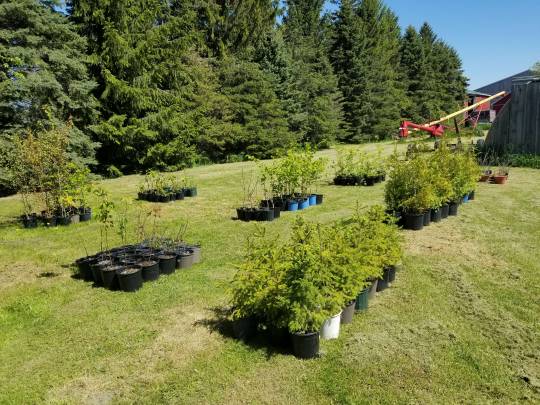


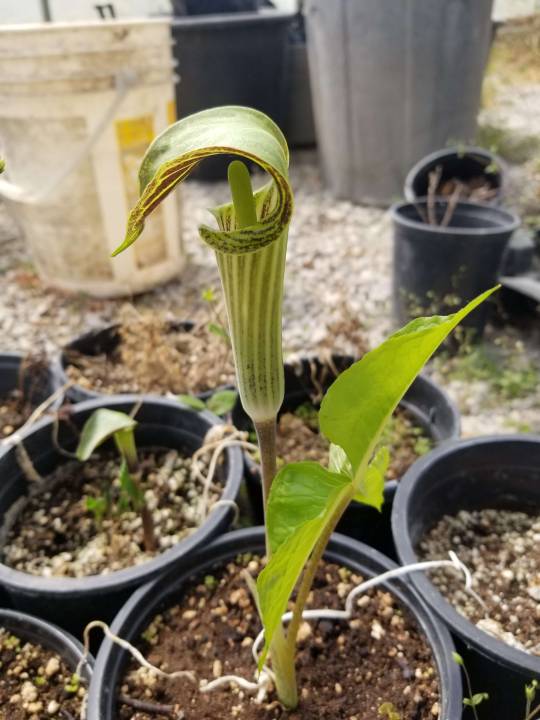
Finally posted the plants that are for sale on the facebook page. I know I don't use my tumblr for business and I don't plan to but w/e for those just curious what I've been trying to sell out on locally here it is;
Arisaema triphyllum 1 gal $8
Asclepias incarnata 'Cinderella' 1 gal $5 and $8 for larger
Asimina triloba 1 gal 7" - 15", $15
Betula alleghaniensis 25"-36"- $15
Catalpa sp. (speciosa) 22" - 34" $15
Cephalanthus occidentalis $10
Cercidiphyllum japonicum 59 "- 87" $20
Hosta 'Golden Tiara' 1 gal for $4 or $15 for larger
Iris sibirica 1 gal $8
Iris domestica 1 gal $8
Penstemon sp. 1 gal $8
Picea glauca 18" - 30" $15
Symphyotrichum novae-angliae 1 gal $5
Syringa retiuclata 27" - 43" $15
Thuja occidentalis 35" - 50" $15
am I underpricing some of these? Probably, but the quality of some of them I personally feel may have dropped since last year, and I just want them gone and in some garden soil rather than waste in a planter.
#not tagging this one since its more of personal-ish for me since I didn't wanna make it so easy to track my irl life/self#but that may not change much so meh#photos are a lil outdated by a few weeks and I know some of the stock is a lil weedy/scuffed but that comes with the exhaustion#I'm just glad I can get myself to water them daily
2 notes
·
View notes